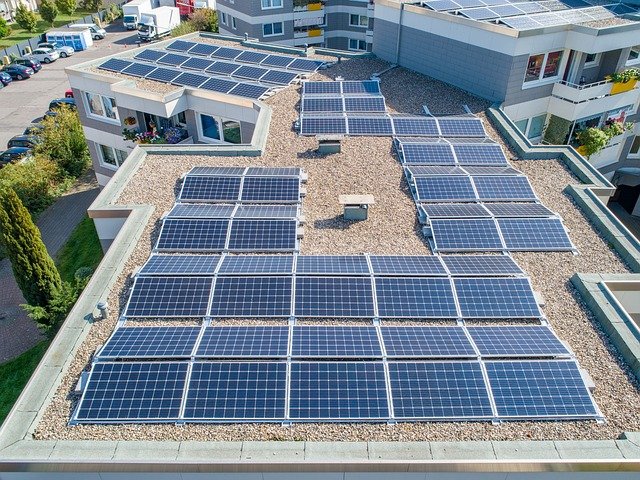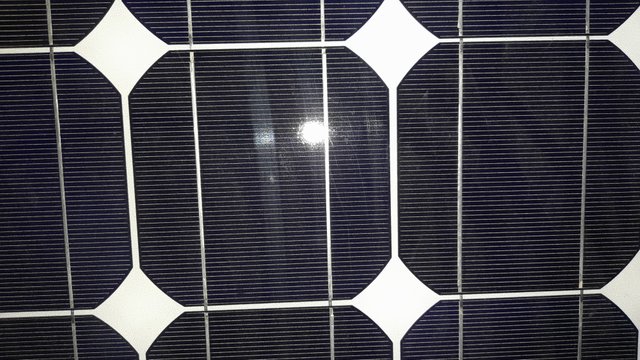
| Source |
|---|
Hello folks,
I should have posted my second review lectures from my online course on solar. But due to some situation beyond my control, I couldn’t.
The good news now is that I am back with it.

Instructor: Prof. Arno Smets
Course: Solar PV Makeup and components.
And it’s going to be a glance at my last lecture. I have watched a lot of videos for reverences and I have done my first test or what you may call an assignment.
For the second week, my lessons were much on solar PV components and how they contribute effectively to the system.
What is a PV System?
A Photovailtic or PV system is a combination of components that enable us to harness the power of the sun in our own homes or businesses.
Part of what we studied that week was more about how to make basic design decisions for PV systems.
Though I have known some of this before now during my first physical training, I won’t say I didn’t learn any new thing, of course, I did. Again, I appreciate the terminologies used in this regard, much of which I didn’t know prior to this time.
PV systems include all components required to convert the energy from the sun and be able to use it with regular appliances. And this consist of two main components, a PV Module, or several, and an inverter.
Depending on the topology of the system, a battery may be necessary. In my own case battery is necessary.
The Converting process
When there is sunlight, the PV modules (Panels) on top of a roof are busy converting the incoming irradiance into photo-generated power.
The grid-connected solar Inverters used in such systems are also constantly converting the DC power output of the solar modules into some usable AC power, at this point, the PV system is able to meet the load demand of the appliances.
But, let’s say it’s on a very high sunny day, the PV system will provide very higher power than what the consumable load could require. And in situations like this, those excess power is fed to the grid. Consumers can offset their electric bills in situations like this.
This facility is called net metering.
 |
|---|
A look at the PV modules
A PV module is made from a collection of solar cells. Basically, crystalline silicon PV modules are made from a number of crystalline silicon solar cells.

These smaller cells are connected to form a PV module, which is connected together with other modules to form what is known as a PV array.
It was also pointed out during the lectures that, these cells can be connected in different ways which can affect the characteristics of a module.
We have the series connection of the cells and the parallel connections of the cells.
Series Connections of the solar cells
In the series connection, the open circuit voltage of each cell adds up, while the current through the series of the cells is constant, assuming steady conditions.
Parallel connections of the solar cells
In this connection, the voltage across all the cells in parallel is constant, however, the current produced by each cell adds up.
PV modules perform much better when irradiated with direct sunlight. The more reasons why folks install their panels on the roof. It gives a good result when it is appropriately placed at the right spot and this was covered under orientation and tilt.
I will write the continuation of this lecture soon...!!
Sponsor:
This Solar PV training and the current Solar PV running project in Nigeria are sponsored by @pennsif as part of his off-chain development project of his witness @pennsif.wtness. Please we would appreciate it if you give his witness a vote for more development and supports if you have not done that already.
Vote for @pennsif.witness as witness ...
 |
|---|
Thank you for this great lecture. Each day, I am getting to learn more about solar PV and it's getting interesting and at the same time educative.
My take home for today are;
Well done @ubongudofot
Success all the way!
Downvoting a post can decrease pending rewards and make it less visible. Common reasons:
Submit
Thank you very much. Its good to know that you have learnt something. More are still coming ...
Downvoting a post can decrease pending rewards and make it less visible. Common reasons:
Submit
Nice project you have ongoing. Wishing you the best of successes
Downvoting a post can decrease pending rewards and make it less visible. Common reasons:
Submit
This is beautiful, you have a great project for all of us. You are also applying the basic principles in life to your advantage and to the world at large.
Most importantly making good use of the basic science which is series and pararell connection we learnt in physics.
Greetings.
Downvoting a post can decrease pending rewards and make it less visible. Common reasons:
Submit